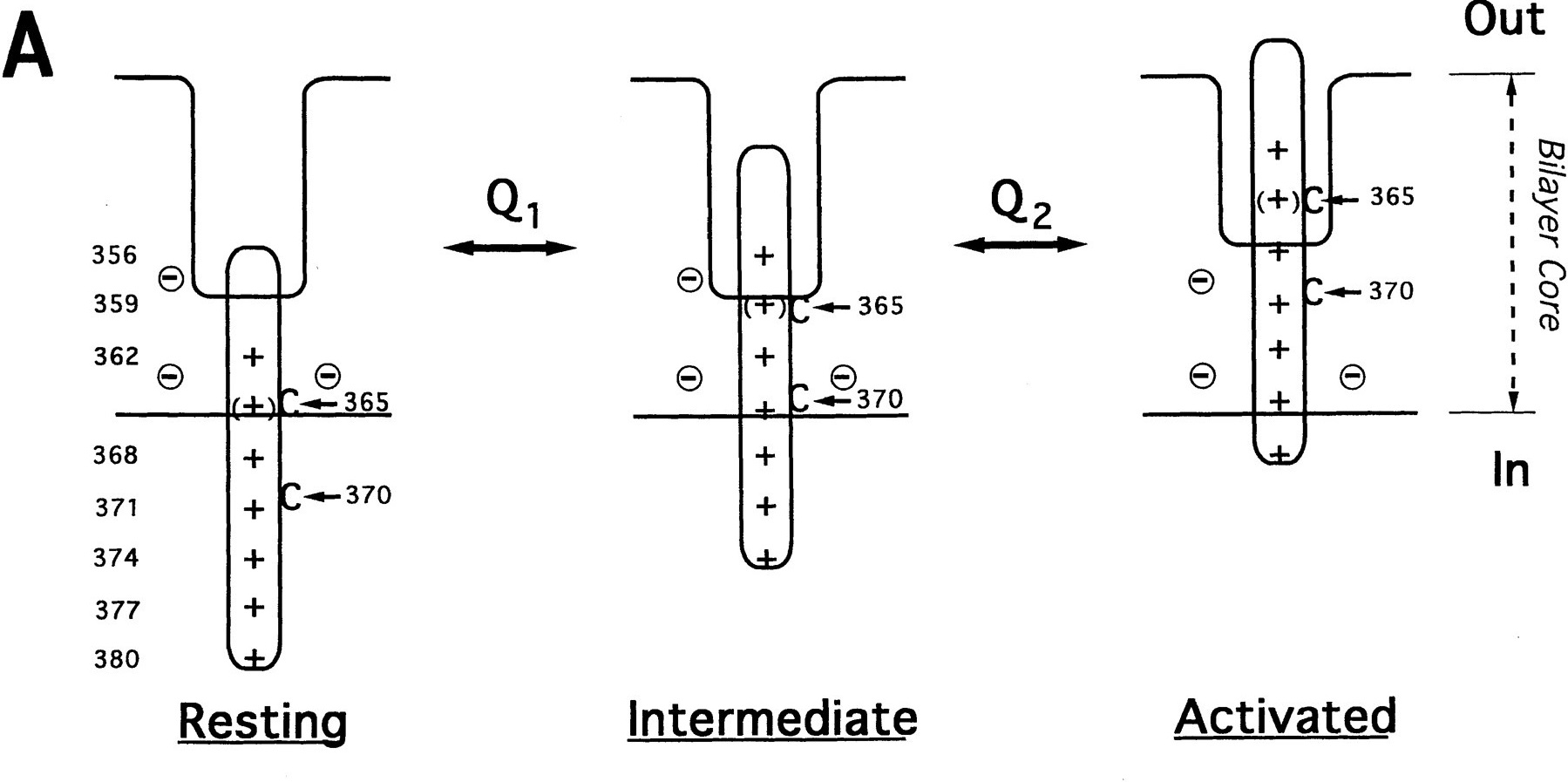
Three transmembrane conformations and sequence-dependent displacement of the S4 domain in shaker K+ channel gating
Abstract
We have acquired structural evidence that two components evident previously in the depolarization-evoked gating currents from voltage-gated Shaker K+ channels have their origin in sequential, two-step outward movements of the S4 protein segments. A point mutation greatly destabilizes the “fully retracted” state of S4 transmembrane translocation, causing instead an intermediate state to predominate at resting potentials. This state is distinguishable topologically and fluorometrically. That a point mutation effectively excludes half the range of S4 motion from physiological voltages suggests that the diverse sensitivities among voltage-gated channels might reflect not only differences in S4 valence, but also displacement. Existence of an intermediate subunit state helps explain why modeling channel activation has required positing greater than four closed states.